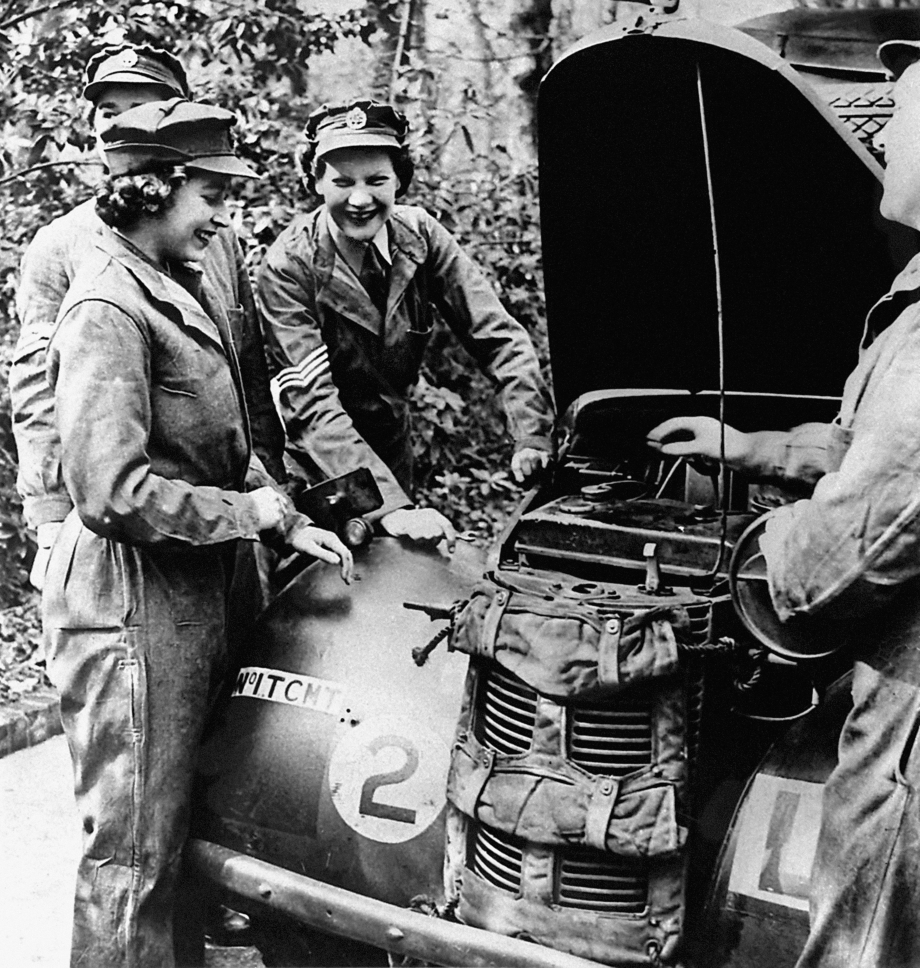Early military associations
The Queen's relationship with the Armed Forces began when, as Princess Elizabeth, she joined the Auxiliary Territorial Service (ATS) in 1945, becoming the first female member of the Royal Family to join the Armed Services as a full-time active member.
During her time in the ATS, the Princess learnt to drive and to maintain vehicles.

Her Majesty’s first military appointment was on 21 April 1947, her 21st birthday, when The Queen, then Princess Elizabeth of York, was appointed Colonel in Chief of the Balaklava Company, 5thBattalion of The Royal Regiment of Scotland.
The Duke of Edinburgh was a serving naval officer when he married Princess Elizabeth in 1947, having seen action in the Second World War. Between 1949 and 1951, His Royal Highness was stationed in Malta as second in command of HMS Chequers, operating with the Mediterranean fleet, so for a brief period before her Accession, Her Majesty lived privately as a naval wife.
Having had members of my family serve in each of the Armed Services, I know only too well of the pride Service personnel take in their duty.
Working life as Head of the Armed Forces
The Queen held over fifty ranks and appointments in the UK and Commonwealth Armed Service and much of her working life was taken up with visits to military bases and ships in the UK and overseas, meeting serving members of the Armed Forces and their families.
Her Majesty often marked special anniversaries or events in a regiment's history by presenting the unit with new regimental flags, or 'Colours', in a formal ceremony. She also regularly attended The Sovereign's Parade to mark the passing out from Sandhurst of Officer Cadets who had completed their Commissioning Course.
The Queen supported veterans of the Armed Forces through her many patronages which included the Royal British Legion, the Union Jack Club, and the Not Forgotten Association, for which she held an annual Garden Party in the grounds of Buckingham Palace.
As Head of the Armed Forces, Her Majesty sought to comfort and motivate military personnel at challenging times, often remembering those who had been deployed away from their families at Christmas in her annual Christmas Broadcast. In 2012 she said,
“For many, Christmas is also a time for coming together. But for others, service will come first. Those serving in our Armed Forces, in our Emergency Services and in our hospitals, whose sense of duty takes them away from family and friends, will be missing those they love. And those who have lost loved ones may find this day especially full of memories.”
In 2020, during the Coronavirus pandemic, The Queen spoke to representatives of the Army, the Royal Air Force and the Royal Navy posted overseas to find out more about their work, their families and their daily lives:
Remembrance
As a national figurehead, Her Majesty led Remembrance events throughout her reign, attending the Royal British Legion’s Festival of Remembrance at the Royal Albert Hall and the Cenotaph Service on Whitehall.
In 2020 she marked the centenary of the Tomb of the Unknown Soldier in Westminster Abbey, laying a wreath in a small private ceremony to honour the body which had been officially received by her grandfather King George V one hundred years before.
She also attended events to mark significant military anniversaries, such as the 75th anniversary of the D-day landings in 2019, where she joined world leaders at a commemorative event in Portsmouth.

In 2009, Her Majesty introduced the Elizabeth Cross, the first medal to which she had put her name. The award gave special recognition to the families of those who had died on military operations, or as a result of terrorism since 1948.
I greatly hope that the Elizabeth Cross will give further meaning to the nation’s debt of gratitude to the families and loved ones of those who have died in the service of our country. We will remember them all.
The Queen's Broadcast to the Armed Forces, 2009
Ceremonial events involving the Armed Forces
At many State occasions, Her Majesty was surrounded by members of the military, symbolising the close relationship between the Monarch and her Armed Forces.

At the thousands of Investiture ceremonies which The Queen held during her reign, Her Majesty always entered with two Gurkha Orderly Officers by her side.
The Foot Guards in their bearskin hats remained iconic figures guarding Her Majesty at Buckingham Palace and Windsor Castle, and the military played important ceremonial roles in State Visit arrival ceremonies, Royal weddings and funerals and, of course, the annual Trooping the Colour parade to mark The Queen’s official birthday.



